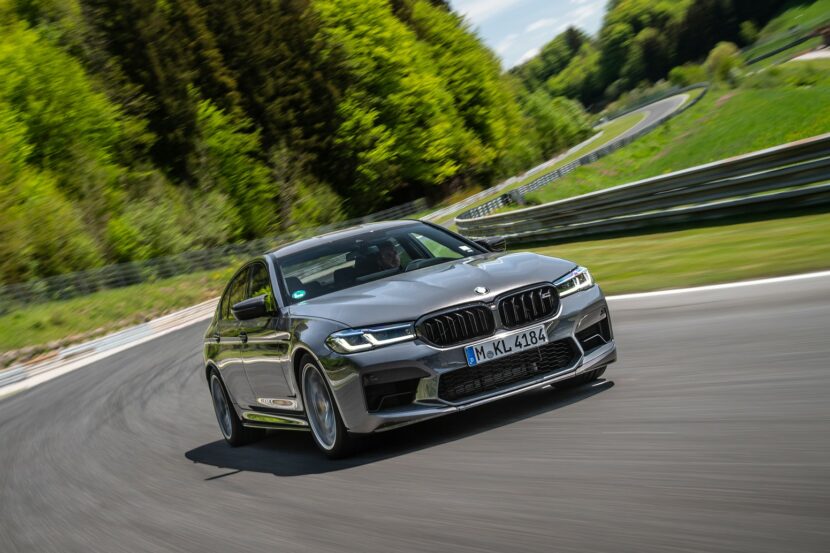The BMW M3 is a fantastic car that is all too often associated with building the reputation that BMW has earned over the last few decades as a purveyor of fine, sporting, automobiles. Of course, true brand historians are well aware that many other vehicles could be more righteously granted that title – be it the 3.0 CSL, legendary BMW M1, or even the M535i. But one other vehicle has firmly cemented its legacy along the M3 – the BMW M5. Debuting before and running parallel to the M3 has always been the faithful luxury-sedan-meets-Autobahn-bomber, the BMW M5.
E28 BMW M5: Historic First
Based heavily on its contemporary 535i, the first-ever BMW M5 debuted in early 1985. Under the hood, a blood relative of the engine found in the legendary BMW M1. In this iteration, dubbed the M88/3, it produced 282 horsepower and 251 pound-feet of torque. Sadly, US customers never got to take advantage of it, instead being forced to accept the S38 engine making 255 horsepower and 243 pound-feet of torque. While perhaps not a great deal of power, it also lost a bit of its heritage.
The E28 M5 featured some important technology for the time. Air conditioning and an onboard computer made the E28 M5 ultra-modern for the time. A manual transmission was the only one offered, and North American customers could only order one in black paint. Why? Because the E28 BMW M5 was hand-assembled but still needed volume production. In total, 2,241 vehicles were produced, making this one of the rarest BMWs ever.
E34 BMW M5: Fine-Tuning
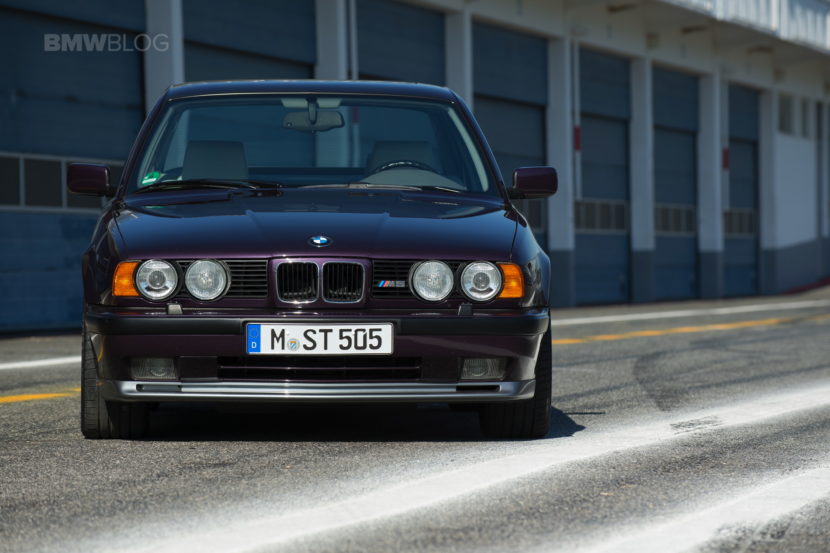
After BMW realized they could actually sell high-powered, sport-focused sedans around the world, they started, well, making more of them. Places not named North America even got a super-cool Touring version. The second generation of M5 was also powered by the S38 inline-six, in this guise good for a little more horsepower and with two different variants. The first is a 3.5-liter variant; a second is a 3.8-liter unit. Peak output was 311 horsepower for the 3.5-liter, and the 3.8-liter produced 335 horsepower.
The E34 M5 offered a little more customization than its predecessors; North American customers even had more than one color choice. Of note are the unique two-piece wheels that early M5s shipped with, which motor journalists so despised that BMW introduced new wheels: the iconic M Parallels. And by new wheels, we mean they were the same wheels as before, just without the covers. Naturally, these are now the most sought-after wheel for these – and many other – interesting vintage BMWs.
E39 BMW M5: V8 Power
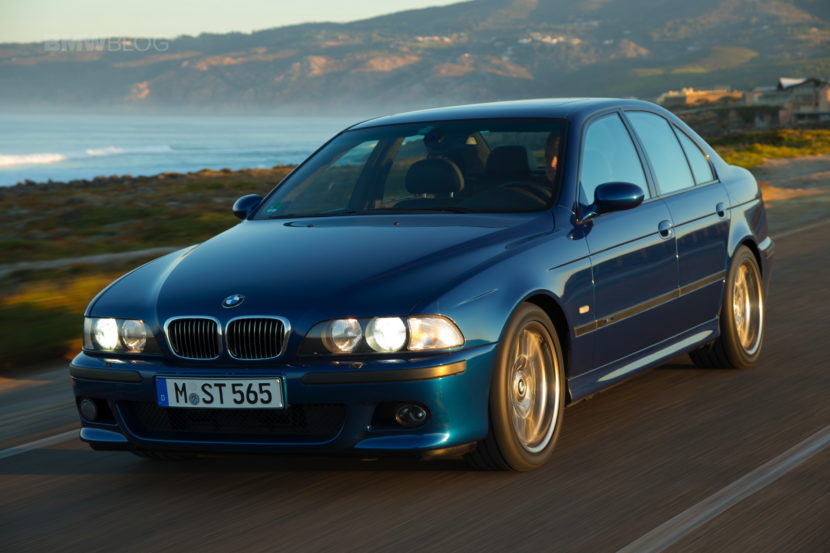
The E39 BMW M5 introduced the incredible performance potential of a V8 engine: enter the motorsport-derived S62 V8. Producing 394 horsepower and 369 pound-feet of torque, it rocketed the E39 M5 from zero to 60 mph in 4.7 seconds. Double VANOS, a Siemens digital engine management system, and a dual intake system made the E39 M5 a significant step forward in terms of technology.
Especially on the outside. With a similarly timeless design to its contemporary (and fellow future classic) E46 M3, the E39 M5 got modern additions like xenon headlights, a navigation unit, and a quad-tipped exhaust. Some will also claim it was the death of the M5 – but they would be wrong.
E60 BMW M5: Bigger and Badder
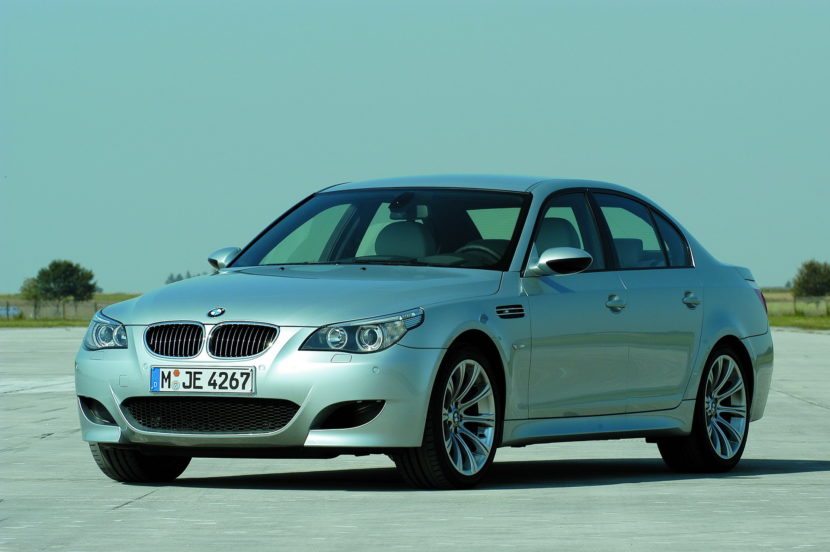
The E60 BMW M5 is a world of firsts for BMW. It was the first production M5 to get an optional transmission (SMG, an automated manual transmission), the first time BMW mass-produced a V10, and featured lots of tech borrowed from lessons learned from the BMW-Sauber racing team. As a result, zero to 60 mph occurred in a brisk 4.1 seconds or less, and the E60 M5 is legendary for its ability to exceed speeds of over 200 mph when freed from its electronic limiter.
While the E60 M5 also got a Touring variant in most of the world, North America never did. However, we did manage to score the option to order a six-speed manual transmission. Of course, mentioning the E60 M5 without talking about its divisive appearance is hard. A product of the Chris Bangle “flame surfaced” design period, it was less than loved in period but has started to age gracefully. A difficult-to-navigate central information display marred the vehicle’s interior until 2009, which saw a significant update. The real selling point of the vehicle was, and continues to be, the incredible engine under the hood – and arguably, marks the last truly special powerplant found in any BMW M5.
F10 BMW M5: Also Bigger
The F10 M5 is the first M5 to use forced induction and the first to receive a Competition Package. BMW dropped the V10, instead swapping in the twin-turbocharged 4.4-liter V8 found in the X5 M of the day and a re-engineered Getrag dual-clutch automatic found in its contemporary M3. Oft-forgotten for its general lack of specialness (compared to the previous generations of M5, anyway), power ranged from 560 horsepower in the base model to 600 horsepower in the vaunted Competition Edition. That’s not a typo: while Competition Package cars raised output to 575 horsepower, regions not named North America got a limited run of 200 Competition Edition cars that pushed that figure up to 600 horsepower.
The F10 M5 retains much of what makes a truly great M car – or car in general. It’s rear-wheel drive, makes massive power, and even got a manual transmission in North America. Less than 20,000 examples were produced worldwide, so it has exclusivity on its side, too. Even more importantly, it’s the last M5 to eschew EPS in favor of more communicative hydraulic power steering. Strange then, it’s so overshadowed by its predecessor – and, perhaps, its younger brother.
F90 BMW M5: All-Wheel Drive Legend
The most recent M5 debuted for the 2018 model year and is the first to offer M xDrive. That equates to an M-tuned version of all-wheel drive, allowing for both a fully rear-wheel drive mode and an in-between mode that allows for more slip but still engages all four wheels when traction demands it. The F90 M5 also has the distinction of being the first BMW M5 to both evolve technologically and lose weight – weighing in 88 pounds lighter than its predecessor.
But that’s far from the most impressive number you’ll find regarding the F90 M5. 600 (or more, with the Competition Package) horsepower comes from a familiar twin-turbo 4.4-liter V8. Thanks to all-wheel drive, the zero to 60 mph takes just 3.2 seconds. The addition of electric power steering also gives the F90 M5 the dubious distinction of being the numbest M5 ever produced.
Future of the BMW M5
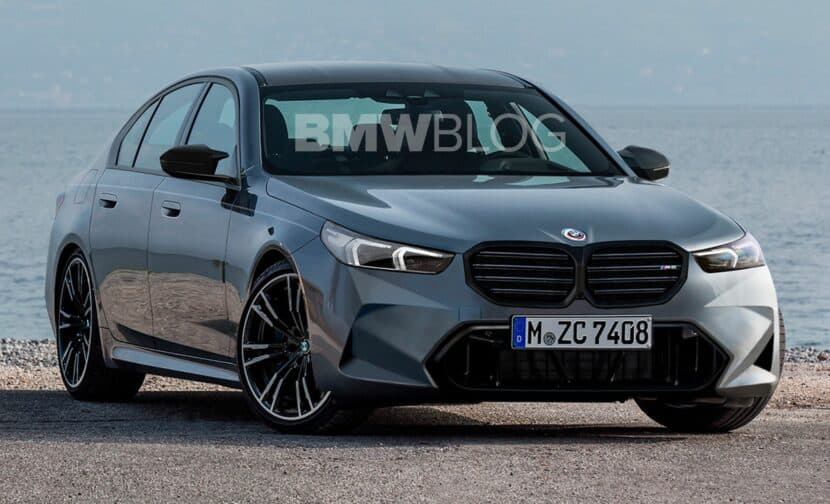
The next generation of the BMW M5 – G90, for those keeping track – promises a hybrid powertrain and likely a lot more power than any other generation. It will be more comfortable, and it will be more connected. But it will also be heavier, longer, wider, and probably have too many (or, perhaps, too few) buttons.
There’s no doubt that the BMW M5, objectively, continues to get better and better with each new generation. But there probably won’t be much the G90 shares with cars like the E39 M5 or E28 M5. Don’t be sad it’s over – be happy it happened. Here’s to progress and the E28 M5.


